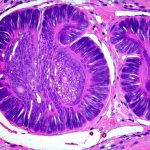The modern lifestyle, with its processed foods, chronic stress, and overuse of antibiotics, has taken a toll on our gut health. Increasingly, people are experiencing what’s known as “leaky gut syndrome” – though it’s important to note this isn’t currently a recognized medical diagnosis by mainstream medicine. It represents a state where the lining of the small intestine becomes more permeable than it should be, allowing undigested food particles, toxins, and bacteria to escape into the bloodstream. This can trigger systemic inflammation, potentially contributing to a wide range of health issues from autoimmune diseases and allergies to fatigue and brain fog. While conventional medicine is still catching up with understanding the complexities of gut permeability, many individuals are finding relief through natural approaches focused on restoring gut barrier function.
Addressing this requires a holistic approach, focusing not just on eliminating potential irritants but also on actively rebuilding and nourishing the gut lining. The cornerstone of this restoration involves strategically incorporating prebiotics, fiber, and probiotic-rich foods into your diet. These aren’t quick fixes; they are foundational elements in cultivating a thriving gut microbiome – the vast community of microorganisms residing in our digestive tract that profoundly impacts overall health. This article will explore how to leverage these natural tools to support a healthier gut barrier and potentially mitigate the symptoms associated with increased intestinal permeability, always emphasizing the importance of consulting with a healthcare professional for personalized guidance.
The Power of Prebiotics & Fiber: Feeding Your Gut Microbiome
Prebiotics are essentially food for your probiotic bacteria – the beneficial microbes living in your gut. They’re non-digestible fibers that pass through the upper digestive tract and reach the colon, where they become fermented by these good bacteria. This fermentation process produces short-chain fatty acids (SCFAs) like butyrate, propionate, and acetate, which play crucial roles in gut health. Butyrate, particularly, is a primary energy source for the cells lining the colon, helping to strengthen the gut barrier and reduce inflammation. Fiber, more broadly, encompasses prebiotics but includes other types of indigestible carbohydrates that contribute to overall digestive function and regularity. A diet lacking sufficient fiber can starve your good bacteria and weaken your gut barrier.
The type of prebiotic fiber matters too. Different fibers feed different bacterial species, fostering a diverse microbiome – which is generally considered healthier. Common sources include inulin, fructooligosaccharides (FOS), galactooligosaccharides (GOS), and resistant starch. Foods rich in these prebiotics include garlic, onions, leeks, asparagus, bananas (slightly green are better!), oats, apples, and chicory root. Gradually increasing fiber intake is crucial to avoid digestive upset like bloating or gas; your gut bacteria need time to adapt. Start with small amounts and slowly increase as tolerated.
Fiber isn’t just about feeding the good guys; it also adds bulk to stool, promoting regularity and helping to eliminate waste products from the body. This reduces the burden on the gut and minimizes exposure to potentially inflammatory toxins. Aim for a diverse range of fiber sources throughout the week to support a balanced microbiome and optimize gut health. Consider incorporating ground flaxseed or chia seeds into your breakfast smoothie – they’re excellent sources of both soluble and insoluble fiber, as well as omega-3 fatty acids which also contribute to reduced inflammation. If you struggle with identifying food sensitivities, consider reviewing screening options for those with weight loss and gut pain to help narrow down potential triggers.
Boosting Fiber Intake: Practical Strategies
Incorporating more fiber into your diet doesn’t have to be a daunting task. Here are some practical strategies:
- Swap refined grains for whole grains: Choose brown rice over white rice, whole wheat bread over white bread, and oatmeal over sugary cereals.
- Add vegetables to every meal: Even small portions of leafy greens, broccoli, or carrots can make a significant difference.
- Snack on fiber-rich foods: Opt for apples with peanut butter, a handful of nuts, or raw vegetables with hummus instead of processed snacks.
- Hydrate adequately: Fiber absorbs water, so it’s vital to drink plenty of fluids to prevent constipation and support optimal digestion.
Understanding Different Types of Fiber
Fiber is often categorized into two main types: soluble and insoluble. Soluble fiber dissolves in water, forming a gel-like substance that can help lower cholesterol and regulate blood sugar levels. Good sources include oats, beans, apples, and citrus fruits. Insoluble fiber doesn’t dissolve in water and adds bulk to stool, promoting regularity. It’s found in whole grains, vegetables, and wheat bran. Both types of fiber are important for gut health, but soluble fiber plays a more direct role in feeding the beneficial bacteria.
The Role of Resistant Starch
Resistant starch is a type of carbohydrate that resists digestion in the small intestine, behaving much like prebiotic fiber. It reaches the colon largely intact and is fermented by gut bacteria, producing SCFAs. Unlike many starches which are quickly broken down into glucose, resistant starch has minimal impact on blood sugar levels. Sources include cooked and cooled potatoes (cooling increases resistant starch content), green bananas, beans, lentils, and oats. Incorporating resistant starch can significantly boost the diversity of your gut microbiome and improve gut barrier function. Understanding acidic versus alkaline foods is also beneficial when planning a gut-healing diet.
Probiotic Foods: Introducing Beneficial Bacteria
Probiotics are live microorganisms that, when consumed in adequate amounts, confer a health benefit on the host – meaning you! They contribute to a healthy gut microbiome by increasing the population of beneficial bacteria and crowding out harmful ones. While probiotic supplements exist, obtaining probiotics from food sources is often preferable, as they come with additional nutrients and naturally occurring compounds that support their survival and activity within the gut. Fermented foods are excellent sources of probiotics, offering a diverse range of bacterial strains.
Common probiotic-rich foods include yogurt (look for live and active cultures), kefir, sauerkraut, kimchi, kombucha, miso, tempeh, and pickles (fermented in brine, not vinegar). The specific types and amounts of bacteria vary depending on the food and fermentation process. Yogurt, for example, typically contains Lactobacillus and Bifidobacterium strains, while kimchi offers a broader range of species. Regularly incorporating these foods into your diet can help restore gut balance and improve digestive function. Fermented foods and their impact on overall health is significant, extending beyond just the gut microbiome.
However, it’s important to note that not all probiotic supplements or foods are created equal. The effectiveness depends on factors like the viability of the bacteria (how many survive until they reach the gut), their ability to adhere to the intestinal lining, and their compatibility with your individual microbiome. Introducing probiotics gradually can minimize potential digestive upset, such as bloating or gas. Start with small portions and observe how your body responds.
It’s also crucial to remember that probiotic foods are most effective when combined with a prebiotic-rich diet. The prebiotics provide the fuel that allows the probiotic bacteria to thrive and multiply within the gut. This synergistic relationship is key to achieving long-term gut health benefits. Think of it as planting seeds (probiotics) in fertile soil (prebiotics). Without the right nutrients, the seeds won’t grow. Individuals with IBS may find foods that trigger bloating helpful to avoid when incorporating probiotics.
Remember this information isn’t a substitute for professional medical advice; always consult with your healthcare provider before making significant changes to your diet or supplement routine, especially if you have underlying health conditions. They can help you determine the best approach based on your individual needs and circumstances. If you’re struggling with brain fog alongside gut issues, consider meal organization techniques to simplify nutrition. Finally, if you suspect a deeper issue, explore scans and labs that track leaky gut progress.


















